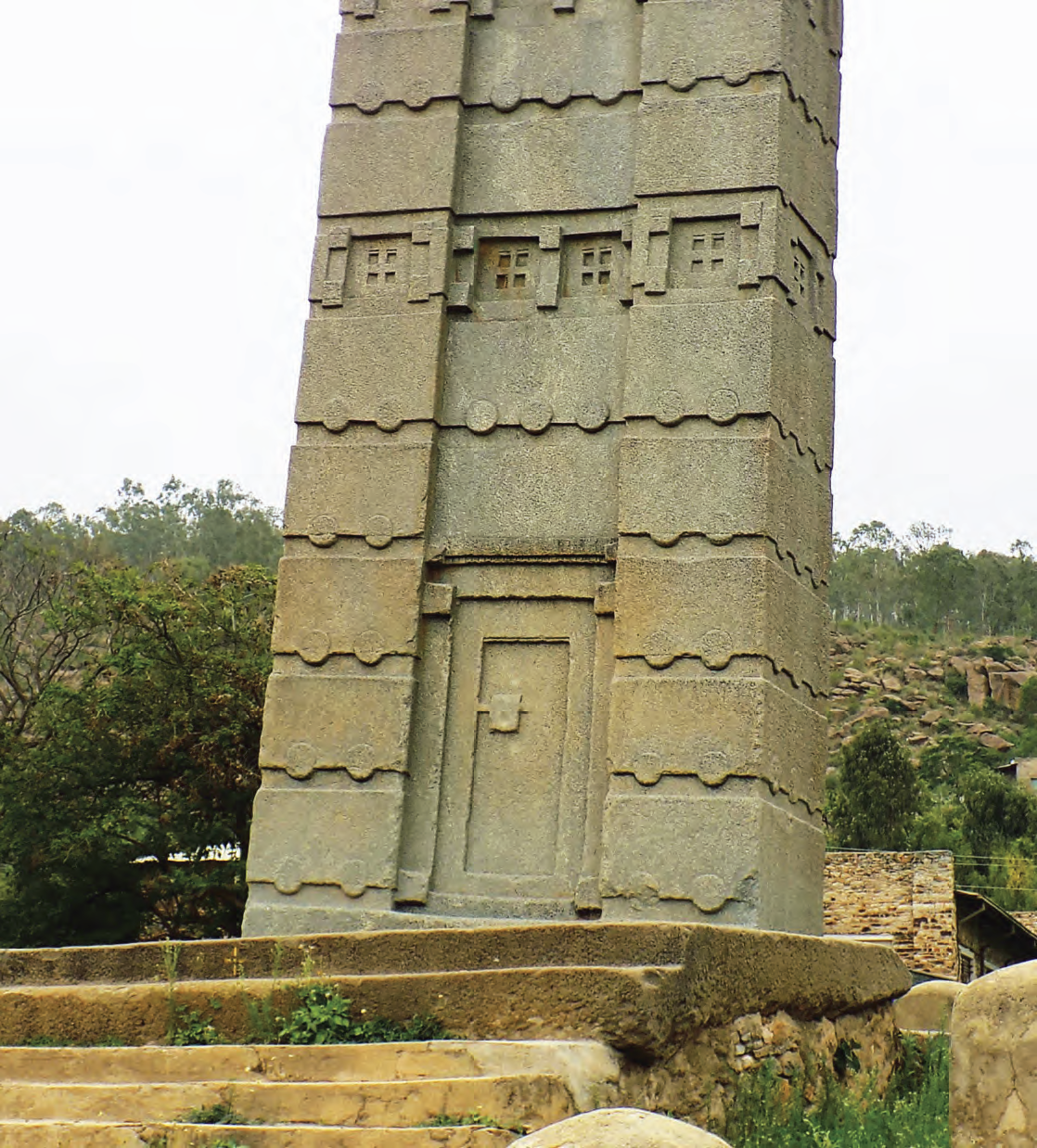Follow @bamasvictoria
Axum, which is invariably written as Aksum, is a town in northern Ethiopia. In ancient times it was the capital of the Axumite Empire, thus making it one of the ancient cities in Africa that is still inhabited.
Axum is not just an ancient town, but it is also on UNESCO’s heritage list, and one of the criteria for its selection reads: “The urban ensemble of obelisks, royal tombs and churches constitute a major development in the cultural domain, reflecting the wealth and power of Aksumite civilisation of the First Millennium AD.”
The stelae (An upright stone slab or column, typically bearing a commemorative inscription or relief design) often serving as gravestones, are found in the Northern Stelae Park. They are one of the town’s visible monuments.

“This is the main cemetery of the kings and the wealthy, and all these (pointing at the obelisks) are marks of the graves,” said Fidir, a tour guide who said he had worked with several archaeologists as a translator.
“The decorated ones belong to the royal and noble family, while the undecorated ones are for their guards,” Fidir further explained.
https://www.dailytrust.com.ng/how-real-is-the-bollywood-reel.html
On entering the Northern Stelae Park, one is greeted by the sight of a fallen obelisk called “The Great Stelae”, which before it collapsed, stood at over 100 feet.
These stelae, our tour guide explained, were markers or headstones for underground burial chambers and that they were made from a single stone carved with multi-story false windows and false doors.
The story behind the fallen stela, according to our guide, is that Queen Gudit in her quest to seek revenge from the Axumites, who she felt wronged her; destroyed it.
However, modern archaeologists believe that it fell when it was being erected, most likely due to lack of enough base strength to support its weight.
Another notable obelisk is King Ezana’s Stela which is most likely the last because the tradition was abandoned after the Axumites embraced Christianity during his reign.

Underneath the fallen stela is Nefas Mewecha, said to be the largest megalithic tomb or dolman on earth. Inside this tomb are several rooms where the dead were buried.
The park also has “The Tomb of False Door” which dates back to the 4th Century AD. It is made up of large granite blocks in the form of a house.
At the entrance of the underground tomb is an erected slab engraved with the image of a door. It was named Tomb of False Door by archaeologists who couldn’t ascertain which of the Axumite kings it belonged to.
At the end of the park is a museum that displays relics from the Axumite period. Here, snapping of photographs is prohibited. There are also gift shops where one can buy crosses, replicas of stelae and craft work.

Across the road from the Stelae Park are the Old and New Cathedrals of St. Mary of Zion, referred to as the old and new “Tsion Mariam Cathedrals”.
Mariam Tsion Church was probably the first Ethiopian church built between the 4th and 5th centuries. It was destroyed in the 16th Century, but was rebuilt by King Fasiledes.
The new Tsion Mariam Cathedral is bigger and more flamboyant than the old one. It is built in a neo-Byzantine style, and it stands in the same compound with the old.
One would wonder, why two churches with same name in the same compound? Fidir the tour guide said legend has it that Queen Gudit, in her quest for vengeance, burnt down the old church and as such when it was rebuilt women were barred from entering.
Fast-forward to the 20th Century, the legend continues that Emperor Haile Selassie, when he was in Axum, his wife, like other women, was not allowed inside the cathedral. As a result of that, he built the new Mary of Zion Cathedral and made it accessible to all irrespective of gender.
However, another story is that Emperor Haile Selassie built it to fulfil a pledge to ‘Our Lady of Zion’ for the liberation of Ethiopia from Fascist occupation.
Between the two cathedrals stands the ‘The Chapel of the Tablet’, which is believed to house the Ark of the Covenant.

Great Stela which before it collapsed, stood at over 100 feet.
Unlike other chapels, this one does not allow admittance to anyone except the guardian monk who resides there.
For emphasis, Fidir said, “Even the Bishop and Patriarch of the Orthodox Church is not allowed access.”
How did the ark get to Axum? The locals are quick to tell you that Queen Sheba’s son, Melenik I, brought it when he went to visit his father, King Solomon.

Legend has it that Melenik I rejected Solomon’s offer to make him king, as such he was given a replica of the Ark, but Melenik I was said to have swapped the replica with the original.
Whether the ark is actually in Axum is what a great many investigators, historians and writers are working hard to unravel. One is left in awe just at the thought of being at a place where the ark probably resides.
The church compound also houses a museum with diversified antiquities such as stone Axumite thrones that may have been used as chairs for bishops during religious ceremonies and as coronation thrones during the medieval period.
The museum which prohibits snapshots contains parchment books made from goat skin, chalices gotten from churches within palaces, clothes worn by Axumite kings during coronation and many such memorabilia.
A crowned king is expected to make donations to the church. And all the solomonic descendants from Melenik I to Haile Selassie were crowned in Axum with the exception of a few.
On the outskirt of Axum lies “Aksum Dongur Palace”, a stone building remains the locals refer to as the “Palace of the Queen of Sheba”.
However, an archaeologist, Stuart Munro-Hay, describes it as, “The sort of dwelling that a prosperous Axumite, perhaps a noble or high official of the 4th to 6th centuries, might have constructed for himself.”
This does not deter the locals as they also have the remains of a reservoir called “Queen of Sheba’s Bath” which they strongly and sincerely believe belongs to Sheba.
https://www.dailytrust.com.ng/gondar-the-castles-churches-history.html


 Join Daily Trust WhatsApp Community For Quick Access To News and Happenings Around You.
Join Daily Trust WhatsApp Community For Quick Access To News and Happenings Around You.

